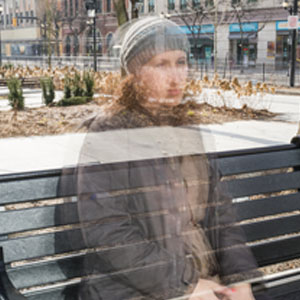
Call for more information and costs or if you are enquiring for yourself or a family member you can use our online cost guide for individuals.
Brain injury
Find out how we helpCHARITIES: Neurological conditions and functional rehabilitation

In the fourth instalment of our Educational Series for charities we explore some of the most common neurological conditions that beneficiaries may encounter, covering some top-level clinical explanations of the conditions and the functional impact that they may have on daily life.
Advances in Neurological OT

The last decade has seen some exciting advances in neurological occupational therapy practice. Focusing on two approaches to upper-limb rehabilitation, find out more about Mirror Therapy and Constraint-Induced Movement Therapy and the significant benefits to clients.
Supporting Hats For Headway

The OT Practice office team show their support for Brain Injury Awareness week by joining in the national 'Hats for Headway' campaign. View photos of the office team in their hats and read about their fundraising activities.
Achievable Fatigue Management Techniques

Fatigue is something that is part of most of our client’s rehabilitation journeys. OT's work with clients to break down tasks & build strategic rehabilitation programmes whilst managing the need for rest & recuperation allowing clients to realise their goals & stretch their capabilities.
A Professional’s Guide to Sensory Impairment

This is the first article in our new series of CPD insights. Read this professional's guide on sensory impairment to learn more about the functional impacts and strategies to avoid clients becoming invisible.
A professional’s guide to neurological occupational therapy services

This guide has been put together to assist Case Managers understand the services an occupational therapist with a neurology specialism can offer a person with neurological impairments.
Case Study: Neurological rehabilitation

In this case study Lucas has sustained an head injury resulting in multiple impairments including cognitive and some physical difficulties. Here we can see how an OT can help with neuro rehabilitation using a goal centred approach.
FAQs for Case managers - Neurological rehabilitation
A selection of the most commonly asked questions by Case Managers about Occupational Therapy Neurological rehabilitation.
Case Study: Paediatric Moving & Handling

Jack experienced a brain injury at birth, resulting in complex physical and cognitive disabilities including wheelchair dependence. This case study highlights how an OT assessed his needs then trained his parents on correct moving and posture for Jack.
Case study in making homes accessible: George’s story

In this case study we meet George and his family, an OT Practice client that needed home modifications after discharge from a rehabilitation setting. Caroline Pomeroy analyses the collaboration between statutory and private therapists with respect to the solutions that were implemented for George and his family.
